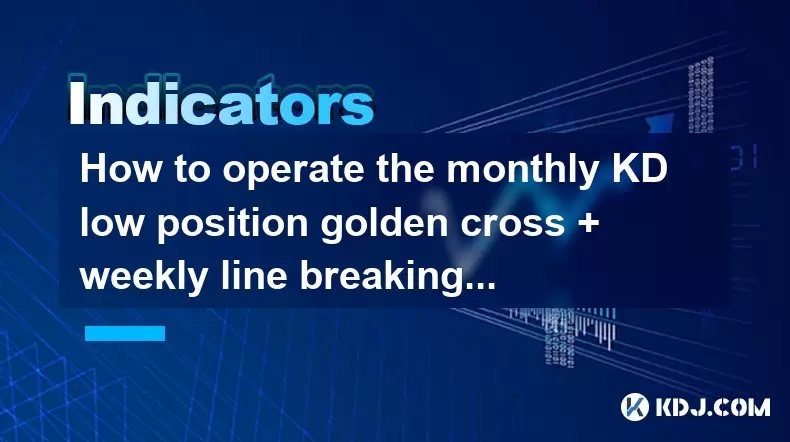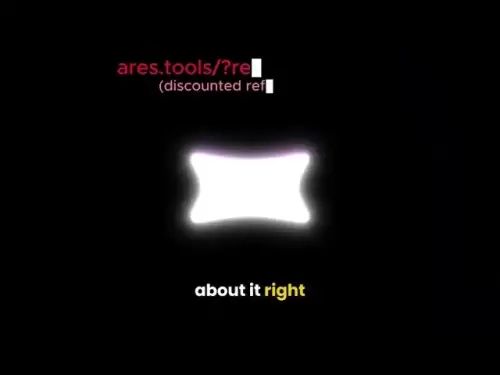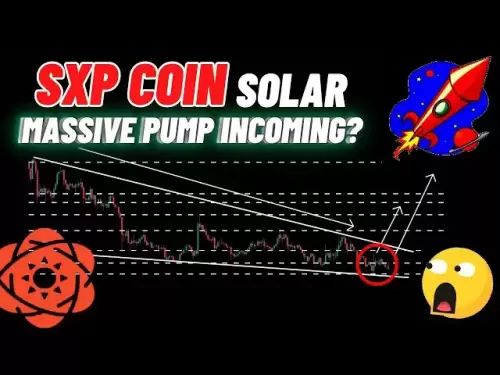-
 Bitcoin
Bitcoin $117500
2.04% -
 Ethereum
Ethereum $3759
3.02% -
 XRP
XRP $3.171
3.30% -
 Tether USDt
Tether USDt $1.000
0.03% -
 BNB
BNB $782.4
2.52% -
 Solana
Solana $187.2
5.62% -
 USDC
USDC $0.0000
0.02% -
 Dogecoin
Dogecoin $0.2380
5.26% -
 TRON
TRON $0.3175
1.07% -
 Cardano
Cardano $0.8227
4.03% -
 Hyperliquid
Hyperliquid $44.50
5.44% -
 Sui
Sui $4.020
10.07% -
 Stellar
Stellar $0.4396
6.28% -
 Chainlink
Chainlink $18.32
4.55% -
 Hedera
Hedera $0.2628
10.71% -
 Bitcoin Cash
Bitcoin Cash $554.8
4.90% -
 Avalanche
Avalanche $24.20
4.60% -
 Litecoin
Litecoin $113.7
2.31% -
 Shiba Inu
Shiba Inu $0.00001413
5.99% -
 UNUS SED LEO
UNUS SED LEO $8.984
0.11% -
 Toncoin
Toncoin $3.326
7.22% -
 Ethena USDe
Ethena USDe $1.001
0.00% -
 Uniswap
Uniswap $10.49
4.56% -
 Polkadot
Polkadot $4.092
4.02% -
 Monero
Monero $326.6
1.30% -
 Dai
Dai $1.000
-0.01% -
 Bitget Token
Bitget Token $4.570
2.49% -
 Pepe
Pepe $0.00001267
5.10% -
 Aave
Aave $297.3
3.10% -
 Cronos
Cronos $0.1344
4.10%
How to operate the monthly KD low position golden cross + weekly line breaking through the 60-week line + daily line shrinking back to the 5-day line?
The monthly KD low golden cross, weekly 60-MA breakout, and daily 5-MA pullback form a high-probability long setup for crypto assets like Bitcoin and Ethereum.
Jul 26, 2025 at 07:42 am

Understanding the Monthly KD Low Position Golden Cross
The monthly KD low position golden cross is a long-term bullish signal derived from the Stochastic Oscillator applied to monthly candlestick charts. The KD indicator consists of two lines: %K (fast line) and %D (slow line). A golden cross occurs when the %K line crosses above the %D line. When this happens at a low position—typically when both lines are below 20—it suggests that the asset has been oversold for an extended period and may be entering a reversal phase.
To identify this signal, traders must first ensure that the monthly KD values are below 20, indicating oversold conditions. Then, they should monitor for the moment when the %K line crosses upward over the %D line. This crossover should be confirmed by observing the next monthly candle to ensure the signal is not a false breakout. It's essential to use historical data to backtest this signal on assets like Bitcoin or Ethereum to assess its reliability under different market cycles.
Confirming the Weekly 60-Week Moving Average Breakout
After identifying the monthly KD golden cross, the next condition involves the weekly price breaking above the 60-week moving average (MA). The 60-week MA is a long-term trend indicator, roughly equivalent to a 15-month average, and serves as a dynamic support/resistance level. A breakout above this line suggests that long-term momentum is shifting from bearish to bullish.
To execute this step:
- Plot the 60-week simple moving average (SMA) on the weekly chart.
- Wait for the closing price of a weekly candle to close above the 60-week SMA.
- Confirm the breakout with increased trading volume during that week to reduce the risk of a fakeout.
- Use tools like TradingView or Binance’s advanced chart to draw and monitor the 60-week line accurately.
- Ensure that the price does not close back below the 60-week MA in the following week, which would invalidate the breakout.
This signal gains strength when combined with the monthly KD golden cross, as both point to a macro-level reversal.
Daily Price Pullback to the 5-Day Moving Average
The final component of this strategy is the daily price retracing back to the 5-day moving average (MA) after the weekly breakout. This pullback allows traders to enter at a better price rather than chasing the breakout. The 5-day MA acts as short-term support during an uptrend.
To apply this condition:
- After the weekly breakout, monitor the daily chart for price action.
- Look for a decline in price that touches or slightly dips near the 5-day SMA.
- Ensure that the volume decreases during the pullback, indicating lack of strong selling pressure.
- Confirm that the 5-day MA is sloping upward, showing short-term bullish momentum.
- Use candlestick patterns like bullish engulfing or hammer near the 5-day MA as additional confirmation.
This step is crucial for risk management, as it avoids buying at the peak of a short-term rally.
Setting Up the Trading Platform for This Strategy
To implement this multi-timeframe strategy effectively, traders must configure their charting tools properly. Platforms like TradingView, MetaTrader, or Binance’s web interface support multi-timeframe analysis.
Steps to set up:
- Open three chart windows: monthly, weekly, and daily.
- On the monthly chart, add the Stochastic Oscillator with default settings (14,3,3).
- On the weekly chart, apply a 60-week SMA and adjust the color for visibility.
- On the daily chart, plot a 5-day SMA and enable volume indicators.
- Save this layout as a template for future use.
- Enable price alerts for KD crossovers, 60-week MA breaks, and 5-day MA touches.
Ensure that all time zones are synchronized, preferably using UTC, to avoid discrepancies in candle closing times.
Executing the Trade with Risk Management
Once all three conditions are met, the trade can be executed with a structured approach.
Entry conditions:
- The monthly KD has formed a golden cross below 20.
- The weekly close is above the 60-week MA.
- The daily price has pulled back to the 5-day MA with low volume.
To place the trade:
- Enter a long position when the daily candle shows signs of reversal near the 5-day MA.
- Set a stop-loss below the recent swing low on the daily chart, or below the 60-week MA if it's closer.
- Use a position size calculator to limit risk to 1–2% of total capital.
- For futures or leveraged trading, adjust leverage to avoid liquidation during volatility.
- Consider using limit orders instead of market orders to control entry price.
Exit strategy can be based on trailing stops or resistance levels, but the focus here is on entry conditions.
Backtesting and Historical Validation
Before applying this strategy live, backtesting is essential. Historical data on major cryptocurrencies like BTC/USDT or ETH/USDT can be used.
Backtesting steps:
- Retrieve monthly, weekly, and daily OHLC data for the past 3–5 years.
- Manually scan for instances where the monthly KD crossed up from below 20.
- Check if, within the following months, the price broke above the 60-week MA on the weekly chart.
- Observe whether a pullback to the 5-day MA occurred on the daily chart.
- Record the outcomes: profit, loss, or sideways movement.
- Calculate win rate and risk-reward ratio across at least 10 historical setups.
Use spreadsheet software or coding in Python with libraries like Pandas and TA-Lib to automate this process for accuracy.
Frequently Asked Questions
What if the monthly KD golden cross occurs but the price hasn’t broken the 60-week MA yet?
Wait for the weekly breakout. The monthly signal is a warning of potential reversal, but without the 60-week MA break, the trend hasn’t confirmed. Do not enter prematurely.
Can this strategy be used on altcoins?
Yes, but only on high-market-cap altcoins with sufficient liquidity and historical data, such as BNB, SOL, or ADA. Avoid low-volume coins due to manipulation risks.
How long should I wait for the daily pullback after the weekly breakout?
Monitor for up to 3–4 weekly candles. If the price continues rising without retracing, the setup may be invalid. Patience is key to avoid chasing.
Should I use the 5-day EMA instead of SMA?
The 5-day SMA is recommended for consistency with the original strategy. The EMA reacts faster and may generate earlier signals, increasing false positives. Stick to SMA unless backtesting proves EMA superior.
Disclaimer:info@kdj.com
The information provided is not trading advice. kdj.com does not assume any responsibility for any investments made based on the information provided in this article. Cryptocurrencies are highly volatile and it is highly recommended that you invest with caution after thorough research!
If you believe that the content used on this website infringes your copyright, please contact us immediately (info@kdj.com) and we will delete it promptly.
- Vaultz Capital's Bitcoin Bet: A Strategic Shift on the Aquis Exchange
- 2025-07-26 20:30:12
- Pi Coin, Wallet Features, and Coinbase: What's the Buzz?
- 2025-07-26 18:30:12
- Worldcoin, Punisher Coin, and the Meme Coin Mania: What's the Haps?
- 2025-07-26 18:30:12
- Conviction, Justice System, and Murders: A Look at Recent Cases and Shifting Perspectives
- 2025-07-26 18:50:11
- Shiba Inu, Remittix, and the Market Surge: What's the Hype?
- 2025-07-26 19:10:12
- Cardano Price, ADA Holders, and Leadership Criticism: What's the Real Deal?
- 2025-07-26 19:30:12
Related knowledge

What does it mean that the rebound is blocked after the moving average is arranged in a short position for the first time?
Jul 26,2025 at 10:51am
Understanding the Short-Term Moving Average ConfigurationWhen traders refer to a 'short position arrangement' in moving averages, they are describing ...

What does it mean that the parabolic indicator and the price break through the previous high at the same time?
Jul 26,2025 at 07:22pm
Understanding the Parabolic Indicator (SAR)The Parabolic SAR (Stop and Reverse) is a technical analysis tool developed by J. Welles Wilder to identify...

What does it mean when the price rises along the 5-day moving average for five consecutive days?
Jul 26,2025 at 08:07am
Understanding the 5-Day Moving Average in Cryptocurrency TradingThe 5-day moving average (5DMA) is a widely used technical indicator in cryptocurrency...

What does it mean when ADX breaks through 25 and +DI continues to rise?
Jul 26,2025 at 07:00pm
Understanding the ADX Indicator and Its ThresholdsThe Average Directional Index (ADX) is a technical analysis tool used to measure the strength of a t...

What does it mean when the price breaks through the 60-day moving average with a large volume but shrinks the next day?
Jul 26,2025 at 06:01am
Understanding the 60-Day Moving Average in Cryptocurrency TradingThe 60-day moving average (60DMA) is a widely used technical indicator in the cryptoc...

What does the sudden rise of ADX in DMI accompanied by +DI crossing -DI indicate?
Jul 26,2025 at 01:21pm
Understanding the DMI and Its Core ComponentsThe Directional Movement Index (DMI) is a technical analysis tool used to determine the presence and stre...

What does it mean that the rebound is blocked after the moving average is arranged in a short position for the first time?
Jul 26,2025 at 10:51am
Understanding the Short-Term Moving Average ConfigurationWhen traders refer to a 'short position arrangement' in moving averages, they are describing ...

What does it mean that the parabolic indicator and the price break through the previous high at the same time?
Jul 26,2025 at 07:22pm
Understanding the Parabolic Indicator (SAR)The Parabolic SAR (Stop and Reverse) is a technical analysis tool developed by J. Welles Wilder to identify...

What does it mean when the price rises along the 5-day moving average for five consecutive days?
Jul 26,2025 at 08:07am
Understanding the 5-Day Moving Average in Cryptocurrency TradingThe 5-day moving average (5DMA) is a widely used technical indicator in cryptocurrency...

What does it mean when ADX breaks through 25 and +DI continues to rise?
Jul 26,2025 at 07:00pm
Understanding the ADX Indicator and Its ThresholdsThe Average Directional Index (ADX) is a technical analysis tool used to measure the strength of a t...

What does it mean when the price breaks through the 60-day moving average with a large volume but shrinks the next day?
Jul 26,2025 at 06:01am
Understanding the 60-Day Moving Average in Cryptocurrency TradingThe 60-day moving average (60DMA) is a widely used technical indicator in the cryptoc...

What does the sudden rise of ADX in DMI accompanied by +DI crossing -DI indicate?
Jul 26,2025 at 01:21pm
Understanding the DMI and Its Core ComponentsThe Directional Movement Index (DMI) is a technical analysis tool used to determine the presence and stre...
See all articles

























































































